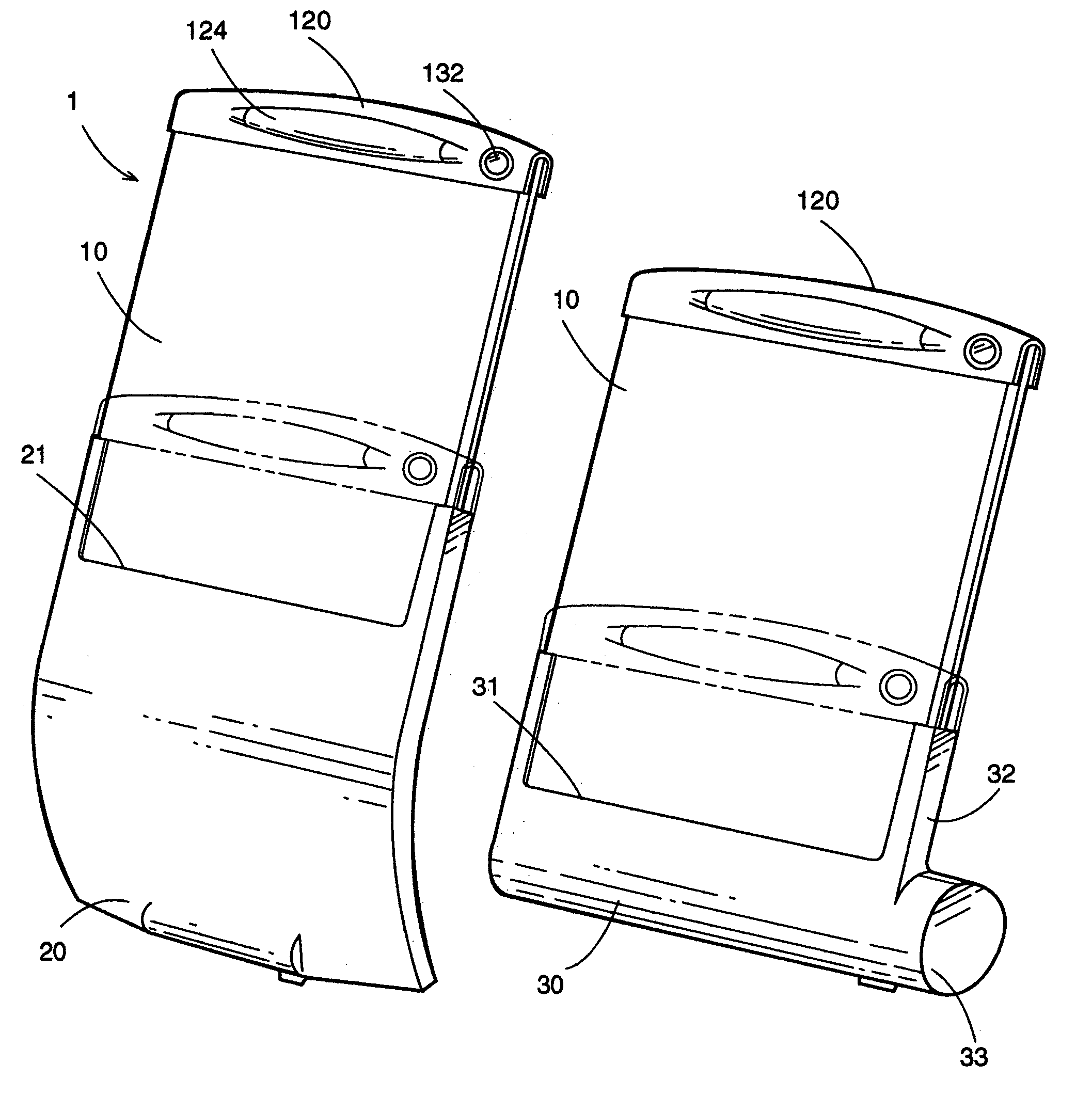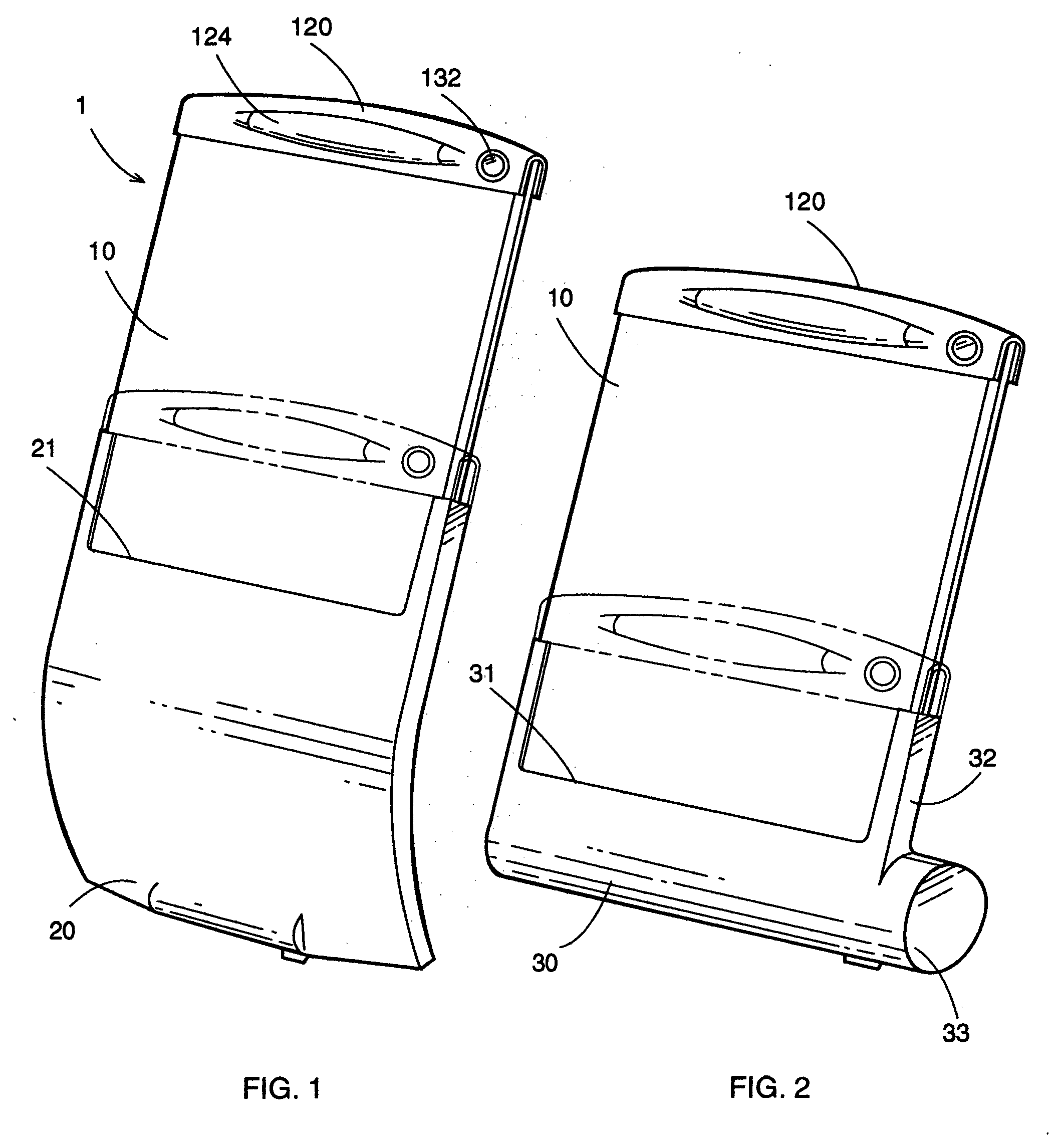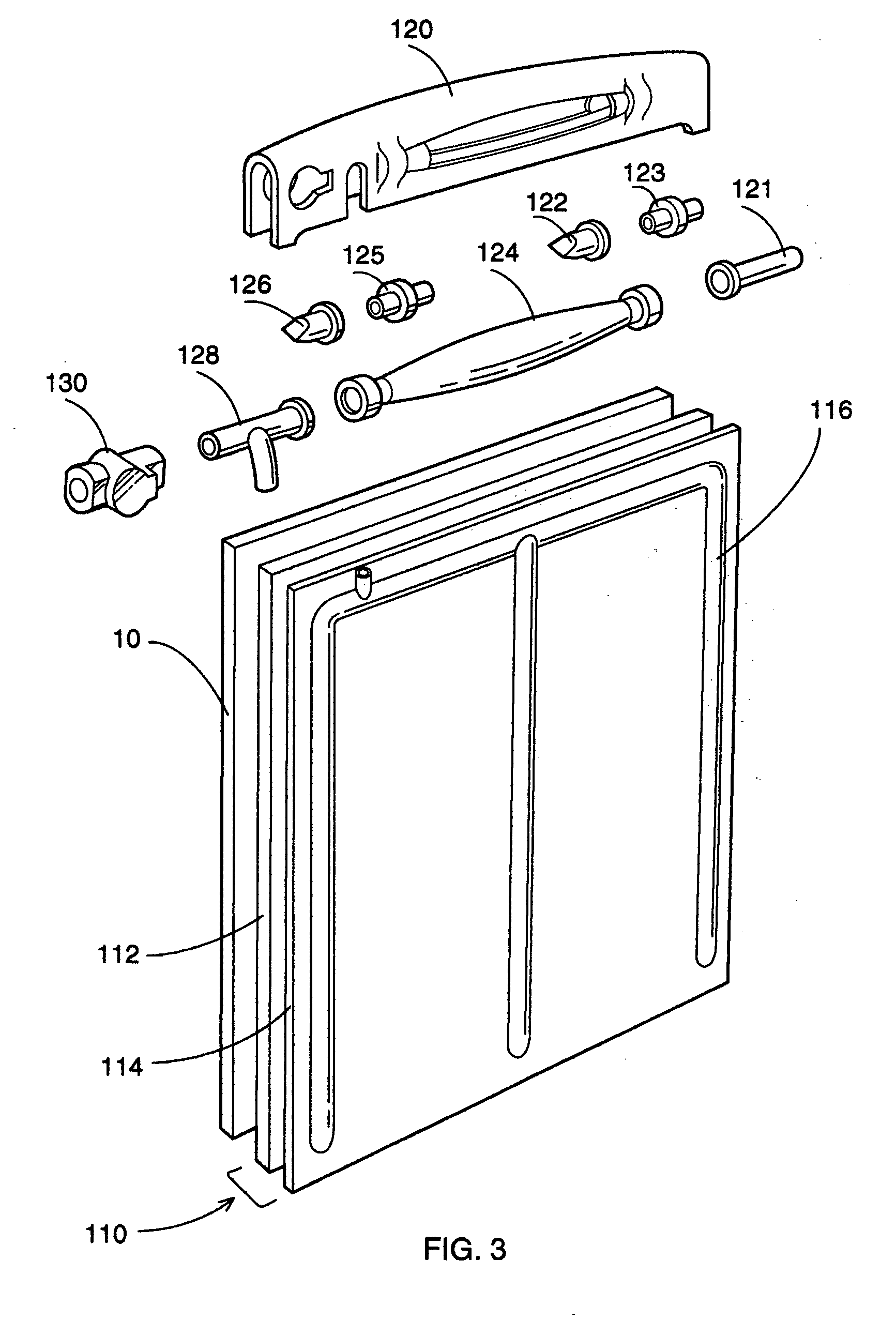Variable stiffness screen
a variable stiffness and screen technology, applied in the field of display units, can solve the problems of insuperable obstacles, rather challenging tasks, and inability to operate in a precise, quick and comfortable manner, and achieve the effect of increasing the flow of visual information
- Summary
- Abstract
- Description
- Claims
- Application Information
AI Technical Summary
Benefits of technology
Problems solved by technology
Method used
Image
Examples
second alternative embodiment
h Superelastic Support System. FIGS. 28-31
[0104] An alternative embodiment of the variable stiffness screen of the present invention is illustrated in FIG. 28 (front view), FIG. 29 (sectional view), FIG. 30 (enlarged sectional view of a detail), and FIG. 31 (schematic diagram of electrical circuitry). The variable stiffness screen 5 comprises the flexible display 10 attached to a structural support system 500 formed of a temperature activated metal alloy. A handle 520 is mounted at the top of the screen (FIGS. 28 and 29). Similarly to the preferred embodiment, the screen 5 can be encased in a carrying member, either a sleeve 20 or a case 30.
[0105] The superelastic support system is based on the unique ability of shape memory alloys, such as nickel titanium (Nitinol) to return to a predetermined shape when heated. When Nitinol is below its transformation temperature (Martensite crystal structure), it has very low yield strength and can be deformed rather easily. However, when the ma...
PUM
 Login to View More
Login to View More Abstract
Description
Claims
Application Information
 Login to View More
Login to View More - R&D
- Intellectual Property
- Life Sciences
- Materials
- Tech Scout
- Unparalleled Data Quality
- Higher Quality Content
- 60% Fewer Hallucinations
Browse by: Latest US Patents, China's latest patents, Technical Efficacy Thesaurus, Application Domain, Technology Topic, Popular Technical Reports.
© 2025 PatSnap. All rights reserved.Legal|Privacy policy|Modern Slavery Act Transparency Statement|Sitemap|About US| Contact US: help@patsnap.com



